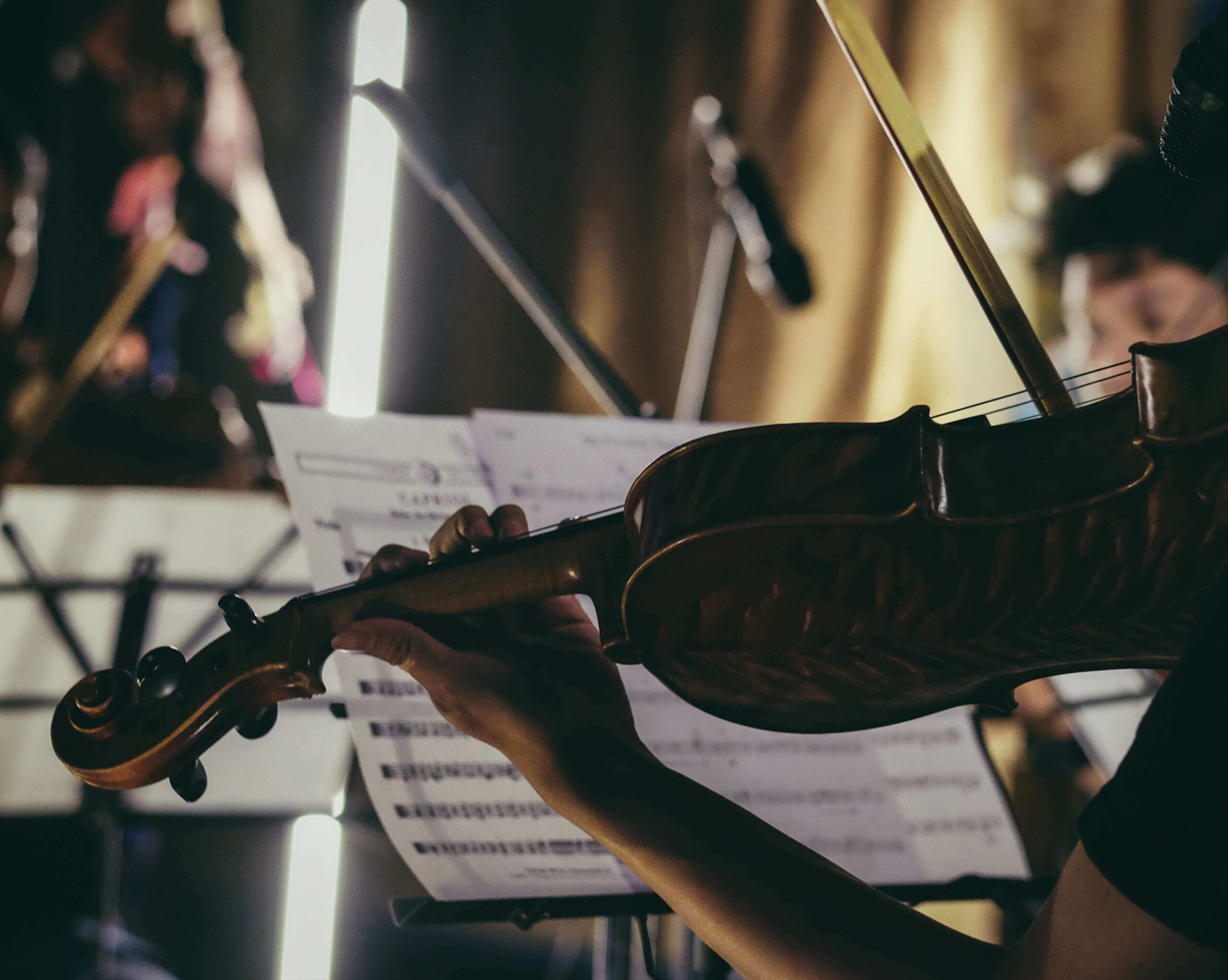One of the most important — and recognizable — portions of a violinist’s bow is the strings, or hair. Strung taut between the bow tip and the frog, the hair is pulled across the violin’s string to produce a sound. As the sound is produced from the instrument’s strings’ reaction to the hair, what type of hair and how it’s strung is important to produce a satisfying sound. So what is a bow string made of and what should you know about it?
What Bow String is Made Of
Bow strings are typically made of between 160 and 180 individual strands of horsehair. These hairs are “dressed” — imperfect hairs are removed — multiple times to ensure they’re of the best quality, without kinked or thick hairs.
While synthetic hair is now available, a majority of bow hairs are authentic and come from the tail of horses from really cold climates such as Mongolia, Siberia, and Canada. This is because the hair of cold-weather horses is much thicker and stronger than those from warmer climates to help insulate heat.
At CodaBow, we use three different grades of Mongolian horsehair for all of our carbon fiber bows: student, performance, and master-level. By utilizing only the most supple horsehair, violinists of all abilities are able to get the most out of their instrument, producing a vibrant sound.
The Colors of Violin Bow Hair
Bow hair is found in a variety of shades from white through gray and finally black, but most bows used for violins are white or gray. This is because black hair is more coarse, it grabs hold of the strings more, and is therefore best for lower-register instruments like the bass.
White or gray hairs come from white and gray horses rather than being dyed or bleached. Dying or bleaching hairs causes damage to the strands, resulting in poor sound quality.
When Should my Bow be Rehaired?
Horsehair is incredibly strong and can withstand many hours of playing, but it will eventually need to be replaced. CodaBow recommends most violinists swap out their bow hair every 6-12 months. Luckily, bows can be rehaired easily and relatively inexpensively. You can submit a service request if your CodaBow is in need of rehairing to keep the sound and performance ideal.
If you are uncertain about whether your bow needs to be restrung, symptoms of failing bowstrings include:
- Your bow won’t tighten anymore
- Your bow produces a scratchy sound
- Hairs are breaking in the middle of the bow
- Hairs are breaking on one side of the bow or the other
- Hairs are dirty or smelly
- There has been a lack of humidity
If you would like more information on when to rehair your bow, we have an informative guide.
If you would prefer to replace your violin bow, we offer a range of industry-leading, award-winning carbon fiber bows from skill levels student through master-level. Each CodaBow is crafted from premium materials using expert methods to create the ideal bow for every musician. Explore CodaBow’s collections to find the best bow for your needs.
Feel free to sign up on our email list for additional information regarding our bow hair standard. Feel free to try an In-Home Trial to see the CodaBow difference.



Stay Connected